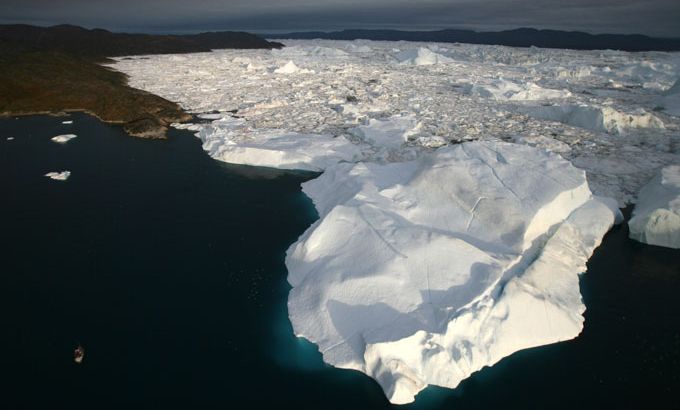Is Greenland turning green?
The rate of melting of ice and snow in this Arctic wilderness is greater than at any time since the nineteenth century.

Greenland may not be turning green, but the icy Arctic landmass is melting at a record rate.
In a remarkable spell between 8 and 12 July, the area of surface snow and ice which had undergone melting had increased from 40% to 97%. This does not imply that all the ice and snow has disappeared – far from it. Greenland‘s ice is up to 3,000 metres at its thickest point so it is likely to remain an icy wilderness for the foreseeable future.
Keep reading
list of 4 itemsAre seed-sowing drones the answer to global deforestation?
Rainfall set to help crews battling wildfire near Canada’s Fort McMurray
The Alabama town living and dying in the shadow of chemical plants
Nevertheless, the rate of melting is unprecedented since satellite observations of the region began more than thirty years ago.
The melting of the ice in Greenland occurs every summer. At higher elevations, the melting ice soon refreezes in place but at low elevations, near the coast, much of the meltwater is lost to the oceans.
This summer’s melt has coincided with a warm ‘dome’ of high pressure, one of a series which have dominated Greenland’s weather since May.
The melting of Greenland’s glaciers, as well as Arctic sea ice, has been predicted by climate change scientists for many years and there are concerns that this latest event could be part of a long-term trend across the high latitudes.
Indeed, such concerns have led to speculation that melting is impacting upon the jet stream, driving it northwards across North American and southwards across Western Europe. This would partly explain the recent heatwave across the former, and record-breaking wet weather across parts of the latter.
Just last week scientists reported that, for the second time in two years, a huge section of the Petermann Glacier had broken off. Twice the size of Manhattan Island, New York, the iceberg was expected to drift into Nares Strait before heading southwards through Baffin Bay towards Newfoundland.
Nasa’s scientists, however, have urged caution in drawing a link between this melting and climate change.
Ice core samples taken from Summit Station, the highest point on Greenland at 3,200 metres, indicate that similar melting events have occurred in the past.
“Ice cores from Summit show that melting events of this type occur about once every 150 years,” said Lora Koenig, a NASA scientist who analysed the satellite data. “With the last one happening in 1889, this event is right on time. But if we continue to observe melting events like this in upcoming years, it will be worrisome.”
Tom Wagner, NASA’s cryosphere programme manager added, “ This event, combined with other natural but uncommon phenomena, such as the large calving event earlier this week on the Petermann Glacier, are part of a complex story.”
Whether Greenland’s disappearing ice and snow is simply part of a natural cycle or evidence of a longer term change in our climate, meteorologists will be closely monitoring weather patterns across the northern hemisphere in the coming week